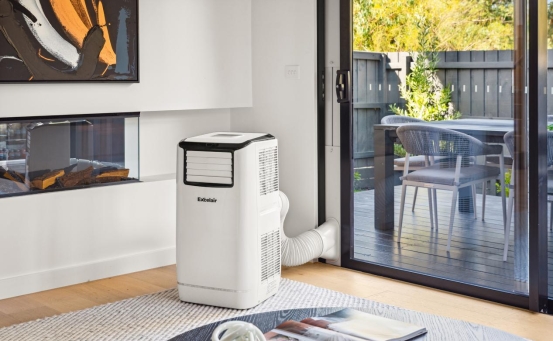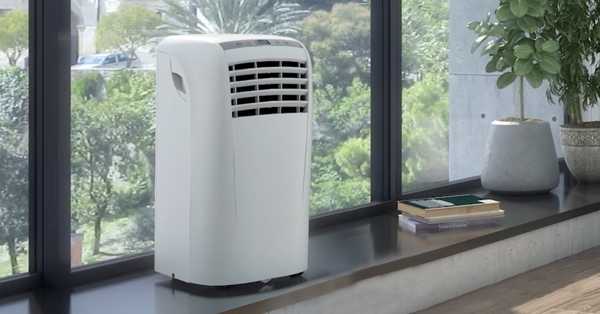Looking for an air conditioner without an outdoor unit? This comprehensive guide covers popular models, their pricing, and the key benefits of choosing a unit that doesn’t require an external motor. Discover how these efficient and space-saving options can meet your home’s cooling needs in 2025.

What are air conditioners without outdoor units?
Air conditioners without outdoor units, also known as through-the-wall or self-contained air conditioners, are all-in-one cooling systems that don’t require a separate external compressor. These units are designed to be installed directly through an exterior wall, with only a small vent visible from the outside. They combine the evaporator, condenser, and compressor into a single, compact unit, eliminating the need for complex installation and outdoor equipment.
How do these units differ from traditional air conditioners?
The main difference between air conditioners without outdoor units and traditional split systems lies in their design and installation. Traditional air conditioners consist of an indoor unit (evaporator) and an outdoor unit (condenser and compressor) connected by refrigerant lines. In contrast, no-outdoor-unit models house all components within a single casing, simplifying installation and maintenance.
Key differences include:
- Compact design
- Easier installation process
- No need for refrigerant lines
- Quieter operation (as the compressor is indoors)
- Improved aesthetic appeal due to minimal exterior visibility
What are the benefits of air conditioners without external units?
Air conditioners without external units offer several advantages over traditional split systems:
- Space-saving: Ideal for small apartments or rooms with limited exterior wall space.
- Aesthetic appeal: Minimal visual impact on building facades, preserving architectural integrity.
- Easy installation: No need for complex ductwork or refrigerant line installation.
- Versatility: Suitable for various building types, including those with strict exterior modification regulations.
- Lower installation costs: Reduced labor and materials required for setup.
- Simplified maintenance: All components are accessible from inside the room.
How energy efficient are air conditioners without outdoor units?
Energy efficiency is a crucial factor when considering any air conditioning system. Air conditioners without outdoor units have made significant strides in this area, with many models now boasting impressive energy ratings. While they may not match the efficiency of the most advanced split systems, they offer comparable performance to standard window units and some lower-end split systems.
Factors contributing to their energy efficiency include:
- Advanced compressor technology
- Improved insulation materials
- Smart temperature control systems
- Energy-saving modes and programmable timers
When shopping for these units, look for models with high Energy Efficiency Ratio (EER) or Seasonal Energy Efficiency Ratio (SEER) ratings to ensure optimal performance and energy savings.
What should you consider before buying a unit without an external motor?
Before investing in an air conditioner without an outdoor unit, consider the following factors:
- Room size: Ensure the unit’s cooling capacity matches your space requirements.
- Wall thickness: Confirm that your exterior wall can accommodate the unit’s depth.
- Ventilation: Check local building codes for proper ventilation requirements.
- Noise levels: While generally quieter than window units, some models may produce noticeable indoor noise.
- Drainage: Determine if the unit requires a dedicated drain line or uses self-evaporative technology.
- Heating capability: Some models offer both cooling and heating functions, providing year-round climate control.
- Installation costs: Factor in professional installation fees when budgeting for your purchase.
What are the costs and popular models of air conditioners without outdoor units?
The cost of air conditioners without outdoor units can vary depending on the brand, cooling capacity, and features. Generally, these units are priced competitively with mid-range split systems but may have higher upfront costs than basic window units.
Here’s a comparison of popular models available in 2025:
Model | Cooling Capacity (BTU) | Key Features | Estimated Price |
Innova 2.0 | 9,000 - 12,000 | Heating function, Wi-Fi connectivity | $1,200 - $1,500 |
Olimpia Splendid Unico Air | 8,000 - 10,000 | Ultra-slim design, DC Inverter technology | $1,300 - $1,600 |
Gree Shiny | 9,000 - 12,000 | Self-cleaning function, Sleep mode | $1,100 - $1,400 |
Midea Aurora | 10,000 - 14,000 | Voice control, 4-in-1 functionality | $1,400 - $1,800 |
Climia CMT | 7,000 - 9,000 | Compact size, ideal for small rooms | $900 - $1,200 |
Prices, rates, or cost estimates mentioned in this article are based on the latest available information but may change over time. Independent research is advised before making financial decisions.
In conclusion, air conditioners without outdoor units offer a compelling solution for those seeking efficient cooling without the need for extensive installation or exterior modifications. With advancements in technology and energy efficiency, these units are becoming increasingly viable options for a wide range of living spaces. By considering your specific needs, budget, and the factors outlined in this guide, you can make an informed decision on whether an air conditioner without an outdoor unit is the right choice for your home in 2025.





